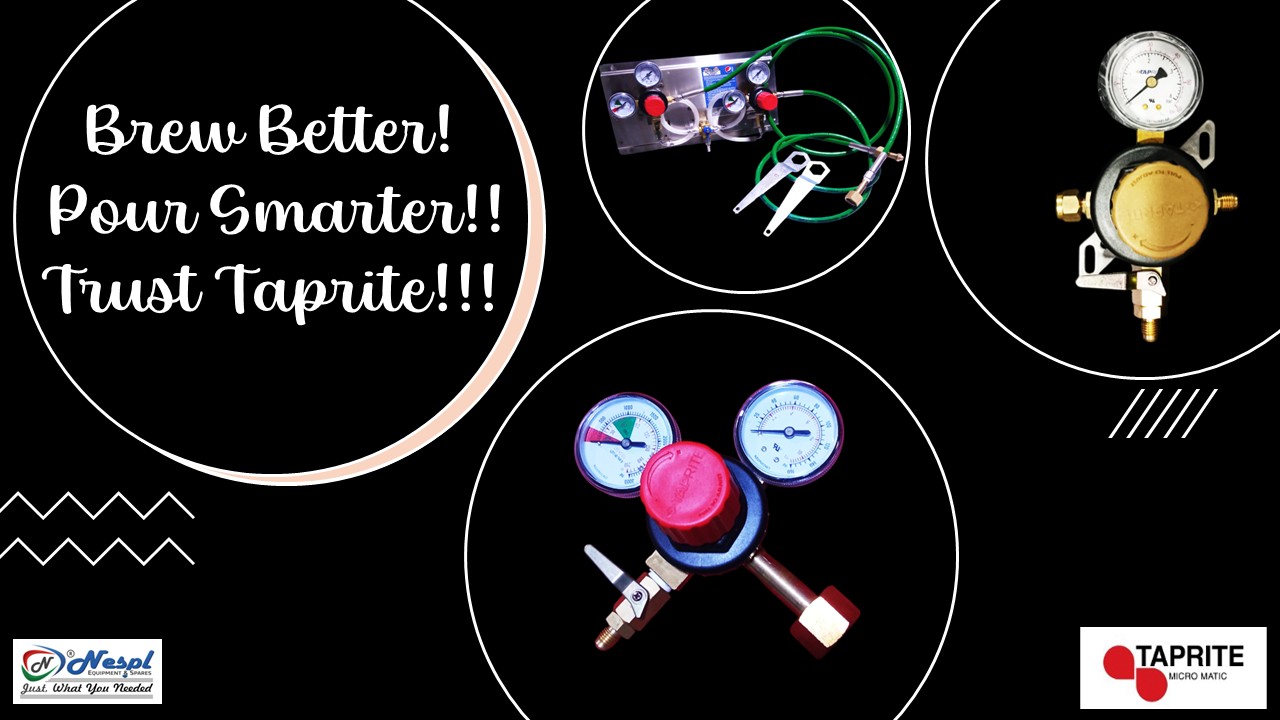If your Taprite CO₂ regulator is leaking, don’t panic, but don’t ignore it either. A regulator leak can lead to wasted gas, poor beverage performance, or even safety issues if left unresolved. Luckily, most leaks come down to a handful of common causes that are easy to identify and fix.
In this guide, we’ll break down the most likely reasons your Taprite regulator is leaking, how to troubleshoot the problem, and when it’s time for a replacement.
Must visit to explore more: https://www.natronequipments.com/soft-drink-industry/soft-drink-pressure-regulators-hoses
Common Causes of Taprite Regulator Leaks
1. Loose or Cross-Threaded Fittings
What to Look For:
- A hissing sound at the CO₂ tank connection or along the gas/beer lines.
Why It Happens:
- Sometimes the fittings aren’t fully tightened, or the threads are misaligned (cross-threaded), causing gas to escape.
How to Fix It:
- Turn off the gas supply.
- Carefully check all threaded connections.
- Ensure fittings are aligned properly.
- Use a wrench to snug the connection, don’t overtighten, which can cause thread damage or deformation.
2. Worn or Cracked O-Ring or Inlet Washer
What to Look For:
- Gas leaking where the regulator screws onto the CO₂ tank.
Why It Happens:
- The rubber or nylon washer inside the tank connection can become flattened, cracked, or lost over time. Many Taprite regulators use a built-in O-ring instead of a removable washer.
How to Fix It:
- Remove the regulator from the tank and inspect the seal.
- If you see a damaged or missing washer or O-ring, replace it.
- Use only food-grade, CO₂-rated washers or O-rings.
Pro Tip: Always keep a few spare washers in your tool kit, this tiny part causes big problems if neglected.
3. Over-Pressurization or Regulator “Creep”
What to Look For:
- Pressure rises on the low-pressure gauge even when you haven’t adjusted the knob. The relief valve may vent gas intermittently.
Why It Happens:
- This is known as regulator creep, an internal failure where the seat or diaphragm isn’t sealing correctly. As a result, gas continues to flow past the regulator even after it’s “closed.”
How to Fix It:
- First, confirm it’s not caused by external temperature changes.
- If pressure consistently rises past the set point, the regulator’s internal components are likely worn.
- This requires a rebuild kit or full replacement, especially if the regulator is older or heavily used.
4. Leaking Relief Valve (Safety Valve)
What to Look For:
A consistent hissing sound or gas escaping from the valve on the regulator body.
Why It Happens:
The relief valve is a built-in safety feature designed to vent gas if the pressure exceeds safe limits. If it’s venting frequently or continuously, there may be internal creep, or the valve itself might be faulty.
How to Fix It:
- Check for signs of regulator creep (see above).
- If pressure is stable but the relief valve still leaks, the valve spring may be worn out.
- Relief valves on many regulators aren’t user-serviceable, replace the regulator if the valve is faulty.
5. Cracked or Damaged Regulator Body
What to Look For:
Visible cracks, gas leaking from the regulator housing or adjustment knob, or signs of physical damage.
Why It Happens:
Drops, improper installation, or overtightening can cause the regulator body to crack. Once cracked, the regulator is no longer safe or repairable.
How to Fix It:
There is no fix. If the body is damaged, replace the entire regulator immediately.
How to Find a CO₂ Leak: The Soapy Water Test
If you’re unsure where the leak is coming from, here’s a simple and reliable method:
- Mix dish soap and water in a spray bottle.
- Spray around all connections: tank fitting, gauge threads, outlet lines, and the regulator body.
- Watch for bubbles, they’ll form where gas is leaking.
Repeat this test after any adjustments or part replacements.
When Should You Replace Your Taprite Regulator?
Sometimes it’s better to stop trying to fix and start fresh. Consider a replacement if:
- The regulator is more than a few years old
- You’re seeing multiple symptoms (e.g., leaks, pressure fluctuations, broken gauges)
- The body or relief valve is damaged
- It’s no longer maintaining consistent pressure
A failing regulator can cost more in wasted CO₂ and poor performance than a new unit would.
Final Thoughts
A leaking Taprite regulator doesn’t always mean disaster, but it’s not something to ignore. With regular inspection, a few simple tests, and the right replacement parts, you can keep your system running safely and efficiently.
Need help finding a replacement regulator, O-rings, or CO₂ fittings? Contact the NESPL team at sales3@natronequipments.com. We stock a wide selection of Taprite parts, fittings, and accessories to keep your beverage system leak-free and running smoothly.




